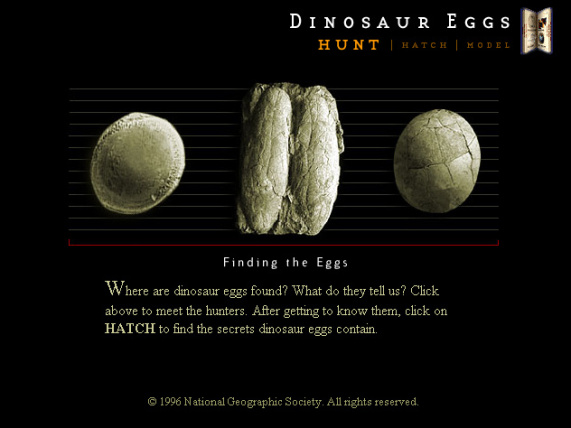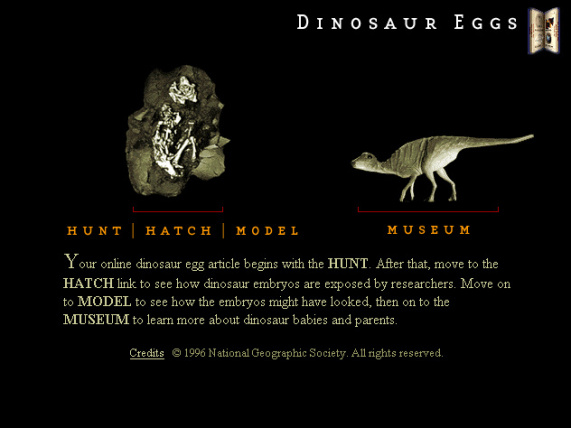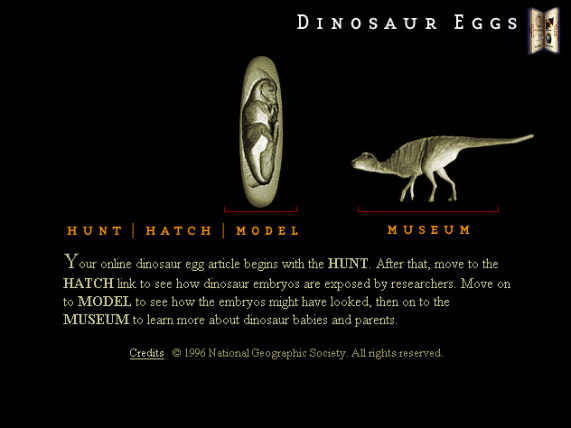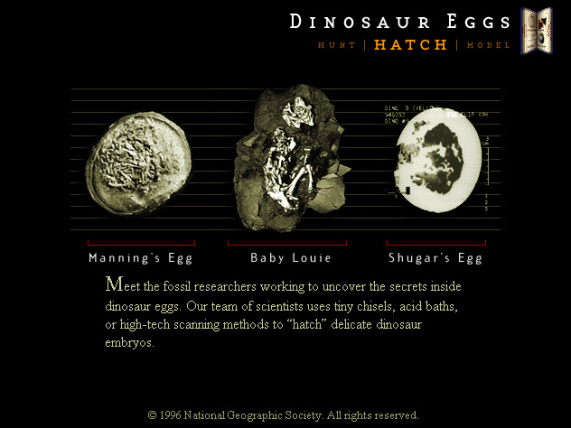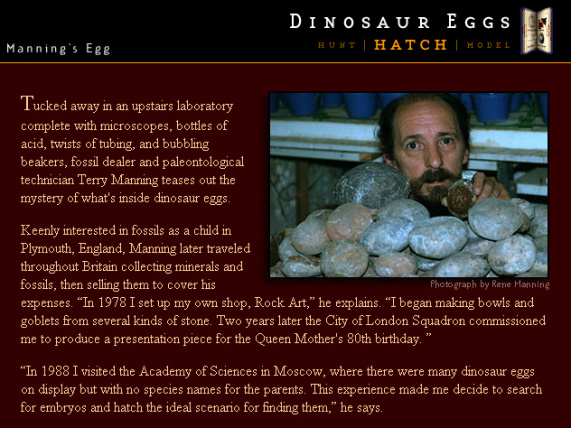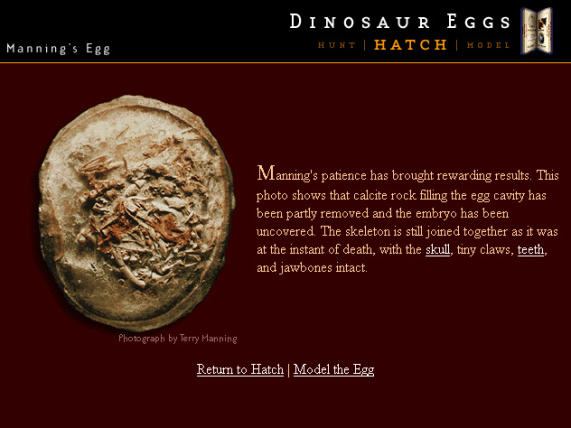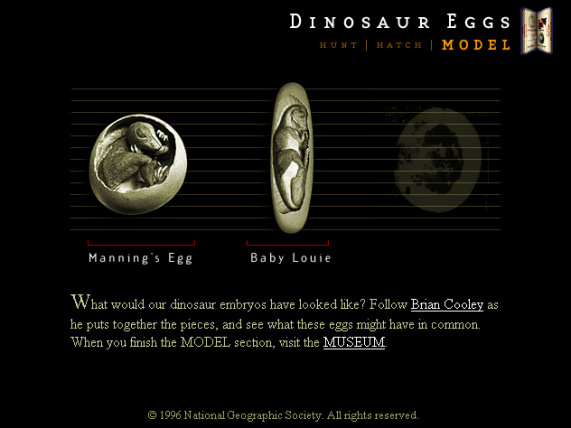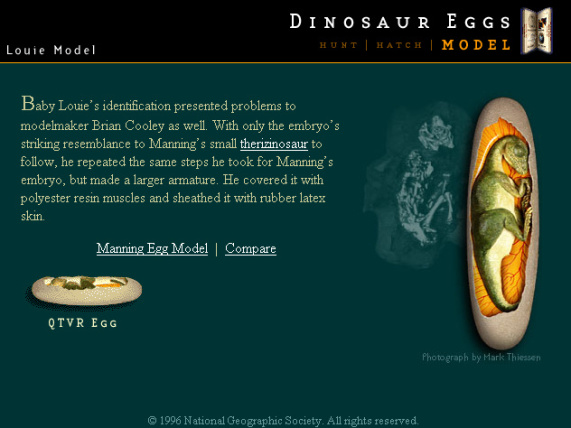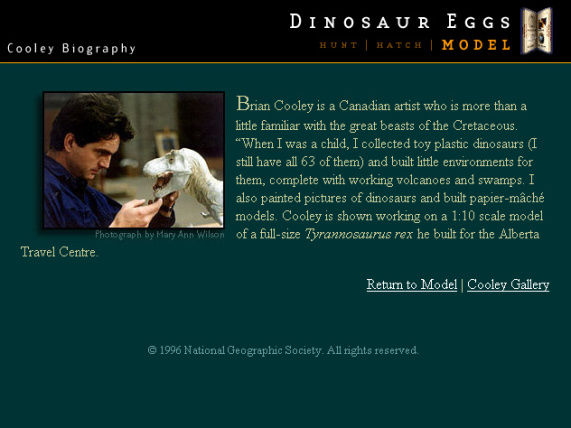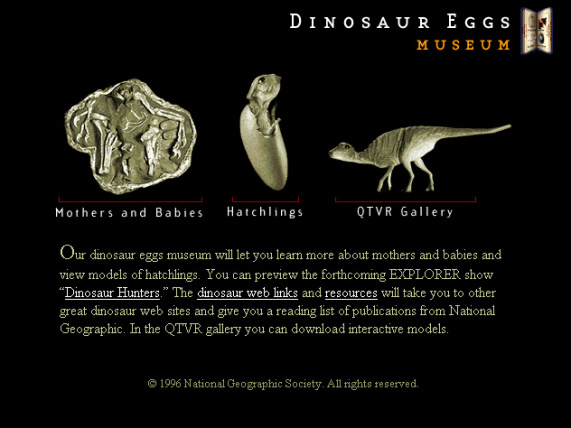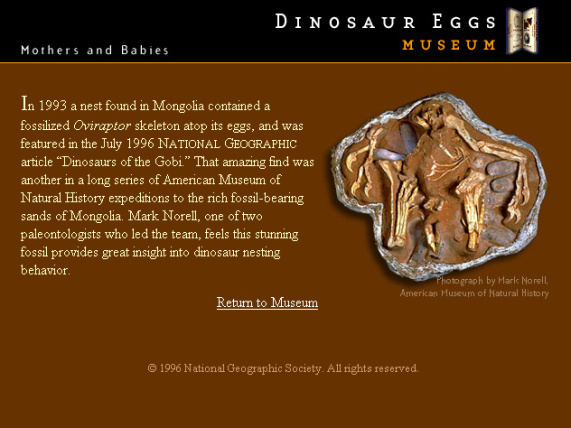Dinosaur Eggs
This Web feature explores where dinosaur eggs are found, the technologies that reveal their species, and the methods used to accurately recreate their likeness in models.
Fossilized dinosaur eggs and their preserved embryos shed light on everything from animal growth to prehistoric family life. The Dinosaur Eggs site, featured on National Geographic Online, offers a behind-the-scenes look at the world of fossil researchers as they search for dino eggs in China. Join the egg hunt and find out how researchers “hatch” fossilized eggs with tiny chisels, acid baths, and CT scans. See the exposed embryos and models of how they might have looked alive. The site’s museum sheds light on the lives of dinosaur mothers and their babies. Dinosaur Eggs was created specifically for 3.0-generation browsers and capitalized on the browsers’ capacity for borderless frames. The site was a continuation in developing linear stories with random accessibility: using the process of embryo research—Hunt, Hatch, and Model—as a navigation metaphor, the site lets users explore by theme or by narrative thread. They can follow the same egg through the three thematic sections to find out how eggs and their contents are discovered, uncovered, and reconstructed, or they can thoroughly explore one theme at a time. Interactive QTVRs let users get a close-up look at the embryos nestled in their eggs, while a museum component provides in-depth support materials.
